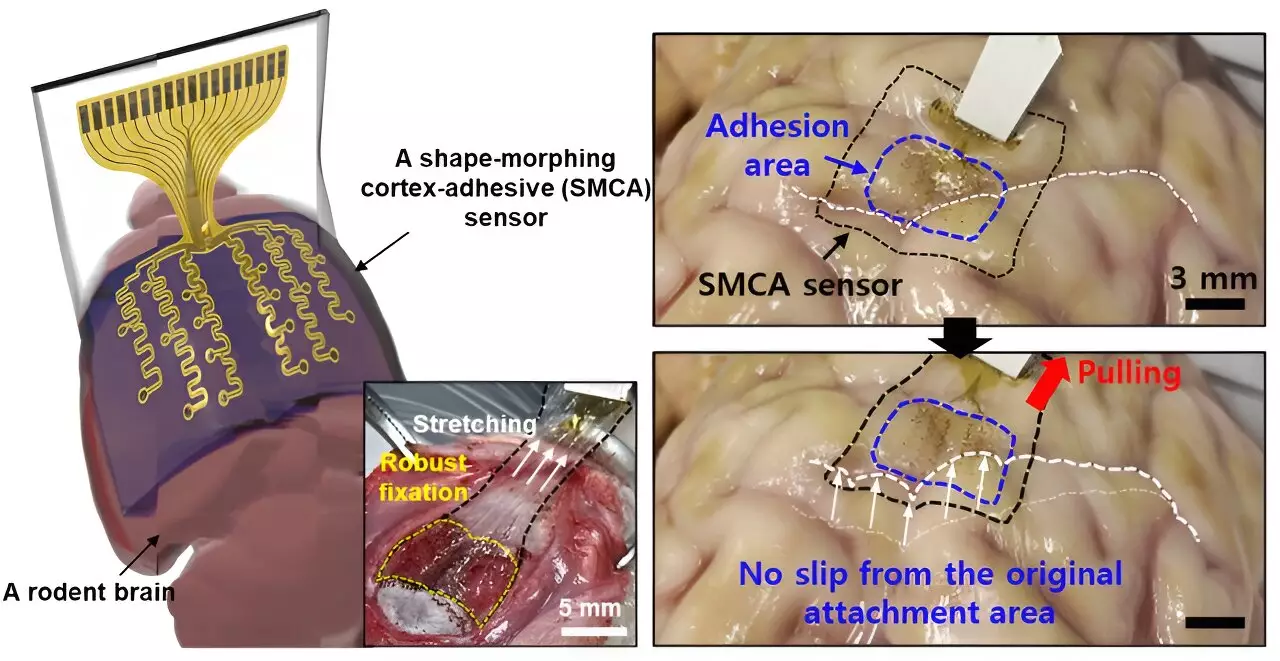Transcranial focused ultrasound (tFUS) is emerging as a groundbreaking non-invasive technique that utilizes high-frequency sound waves to stimulate targeted regions of the brain. With a potential to provide new treatment avenues for various neurological disorders, especially drug-resistant epilepsy, tFUS signals a significant shift in how we approach neurological conditions associated with recurrent tremors. The innovative research being conducted by teams at Sungkyunkwan University, the Institute for Basic Science, and the Korea Institute of Science and Technology focuses on improving the underlying technologies that facilitate this treatment.
Recent advancements have led to the creation of a state-of-the-art sensor that enhances the effectiveness of tFUS applications. Published in *Nature Electronics*, this sensor represents a significant step forward in measuring and stimulating brain activity with improved precision. The new design adapts dynamically, allowing it to conform closely to the complex and irregular surfaces of the brain, thus establishing a secure connection essential for recording neural signals while delivering low-intensity ultrasound waves.
Donghee Son, the supervising author of the study, articulated the previous limitations of earlier brain sensors, which struggled to maintain their adherence due to the intricacies of brain morphologies. The irregularities of brain folds led many researchers to encounter difficulties in obtaining accurate signals and diagnosing brain lesions. Although an earlier sensor developed by Professors John A. Rogers and Dae-Hyeong Kim addressed some of these challenges, it still left a gap in effectively conforming to severely curved areas of the brain.
Overcoming Challenges in Brain Monitoring
The primary focus of Son and his colleagues was to create a new sensor that could overcome these shortcomings and maintain reliable adhesion over extended periods of use. Their remarkable innovation, designated as ECoG—a term that hints at its electrocohortographic capabilities—showcases this enhanced conformity, which significantly mitigates loose contact with brain surfaces that can introduce extraneous noise.
The ability of ECoG to adhere without creating voids between the sensor and brain tissue places it at the forefront of brain-computer interface technology. Son emphasized that this remarkable adherence capability is particularly crucial in optimizing the application of low-intensity focused ultrasound (LIFU) in the treatment of epilepsy, where minimizing external noise can profoundly impact patient outcomes.
Tailored Treatments for Neurological Disorders
Recent advancements in personalized medicine highlight the need for tailored therapies in treating conditions such as epilepsy. However, achieving individualized treatment strategies relies on accurate real-time monitoring of brain activity—something that conventional sensors have struggled to provide effectively. The pressing challenge is that ultrasound vibrations often introduced substantial noise, thus impairing accurate brain wave monitoring.
The new sensor developed by Son’s team breaks through this barrier by employing a three-layer structure that enhances both attachment and adaptability. Initially, a hydrogel layer provides a strong bond to the brain tissue, while a self-healing polymer layer adjusts the sensor’s shape to conform to the brain’s unique contours. An ultrathin layer featuring gold electrodes allows for precise signal recording. This architectural design culminates in a sensor capable of collecting high-fidelity brain data, facilitating more informed treatment decisions.
The advantages conferred by the ECoG sensor extend beyond epilepsy treatment; its capacity for high-resolution monitoring could revolutionize how various neurological disorders are diagnosed and treated. As researchers continue to refine and iterate on the sensor design, the potential for increased electrode density presents exciting prospects. Enhanced resolution will empower clinicians to map brain signals more accurately, leading to more effective therapeutic interventions.
Promising preliminary results from tests conducted on awake rodents suggest that the new sensor can effectively monitor brain waves and even manage seizures, laying the groundwork for clinical applications in human subjects. Plans to upscale the sensor design, ultimately building a high-density array for comprehensive brain mapping, signal a robust path forward in the intersection of neuroscience and technology.
The innovative strides made in transcranial focused ultrasound and the development of adaptable brain sensors mark a pivotal moment in neurology. Beyond enhancing the treatment landscape for conditions like drug-resistant epilepsy, these advancements reflect the overarching goal of improving patient outcomes through refined technologies. Researchers are optimistic that such innovations will not only yield targeted treatment solutions but will also lead to state-of-the-art prosthetic technologies being developed, which could significantly improve the quality of life for many individuals with neurological disorders.

